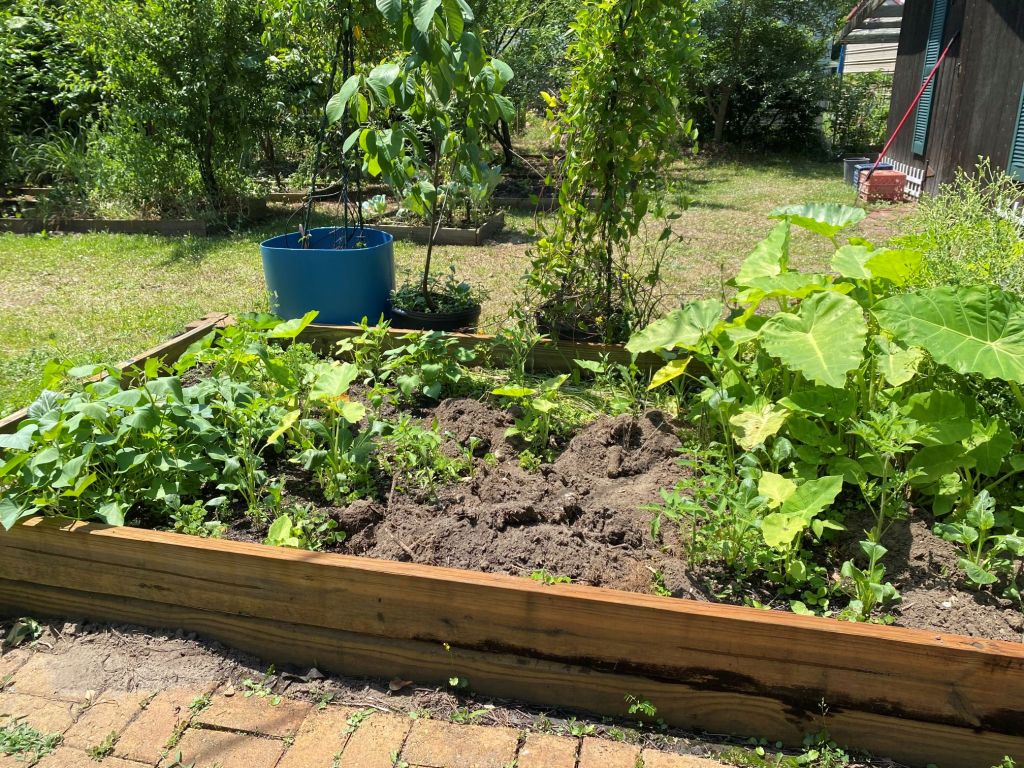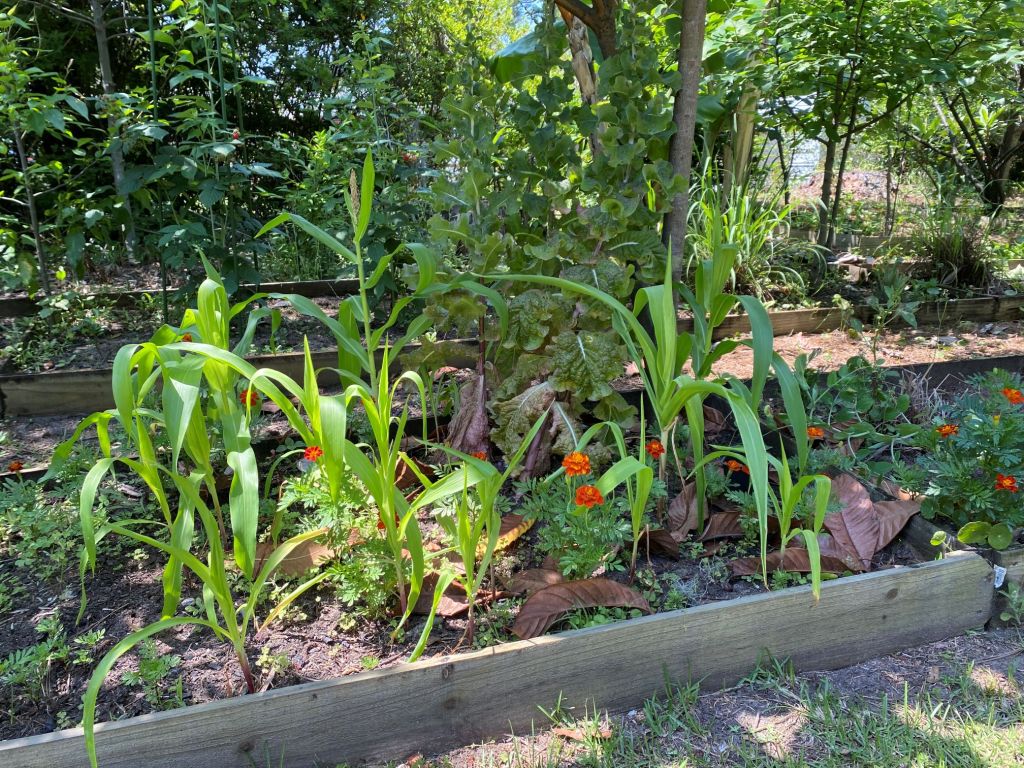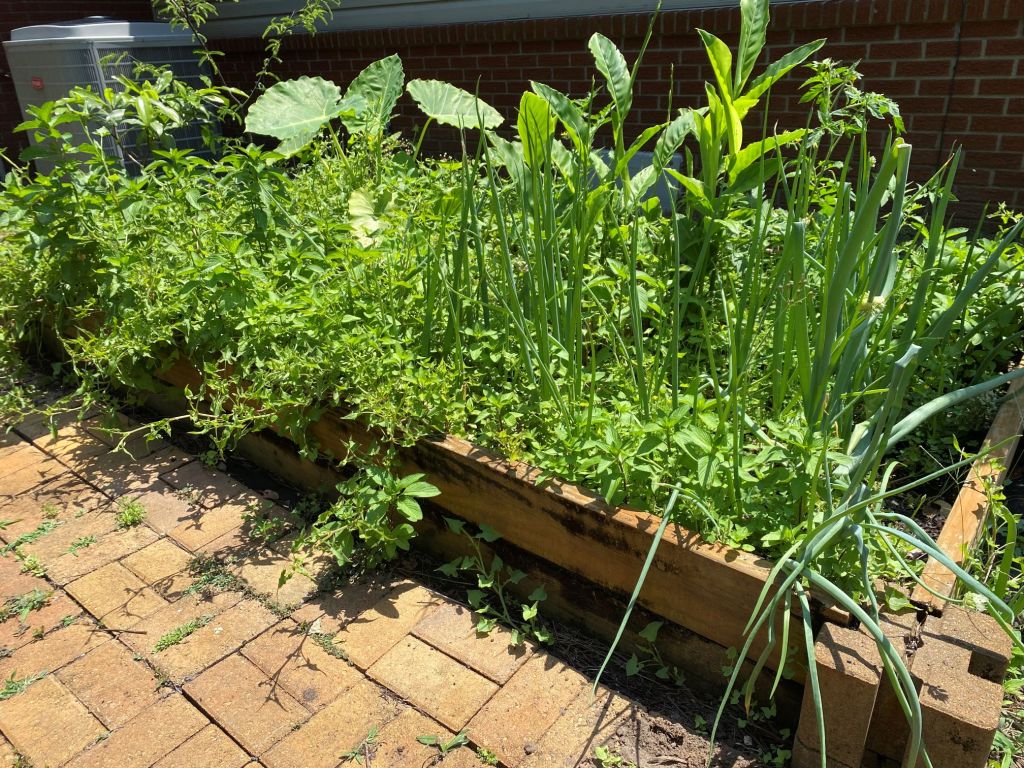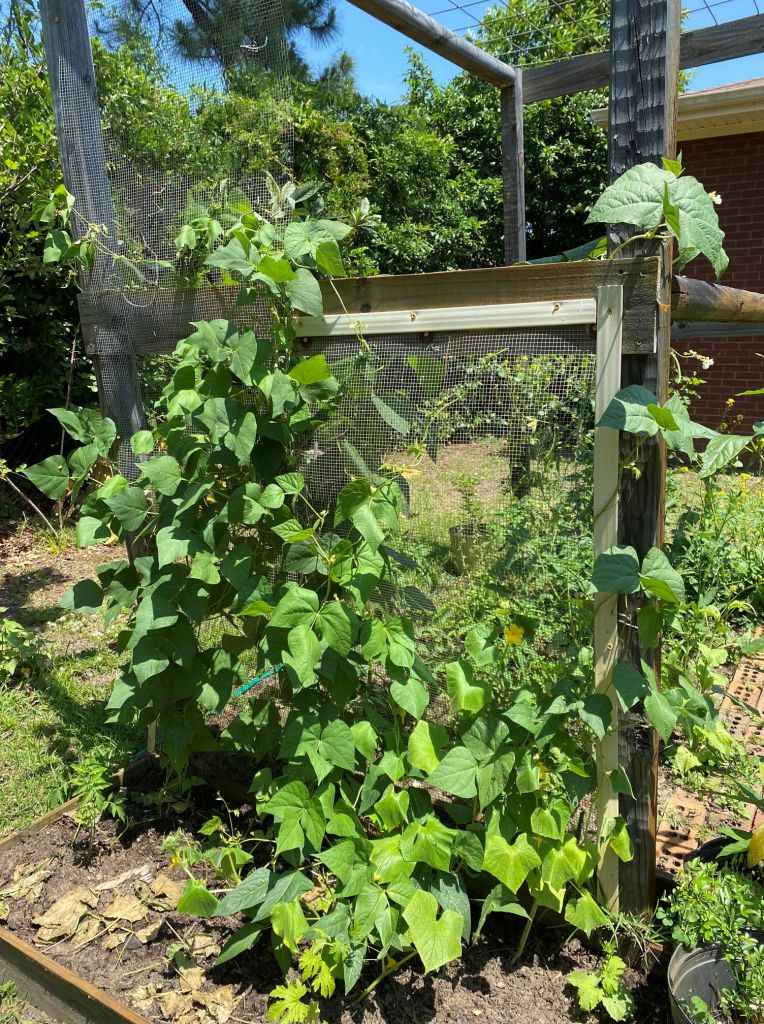Though a practice that’s been done for millenniums, tillage has been shown to cause catastrophic soil erosion. Over the last couple of centuries, the agricultural fields in the midwestern U.S. have lost an unstainable average rate of two millimeters of soil per year (see 1 and 2). Tilling negatively impacts soil structure by fracturing and removing crop residue that would have cushion raindrops. Good soil structure improves soil aeration and water movement.
Tilling also disrupts microbial activity. There is a variety of microorganism such as bacteria, fungi, and earthworms that provide great benefits to soil and plants. So, if we cannot till, what should we do?
We always compost our scraps and leftovers. We would add layers of yard waste and dirt to our compost. After a few months, we would add the compost to the top of our bed. This provides nutrients for our plants. No more synthetic fertilizer! We also sometime add ash from our bonfire to enrich our soil and lower the pH value.
Another great benefit of using compost is that it adds carbon to the soil. Carbon is a food source for the microorganisms. For example, the nitrogen-fixing bacteria convert the atmospheric nitrogen into a usable form for plants. See the following article from Cornell to learn about the carbon cycle.
Figure 1: Add compost on top of garden bed.

We always try to grow variety of plants together as below – just like how farmers tend to grow beans with corns.
Figure 2: Lettuce, corn, marigold, and others.

Figure 3: Many types of herbs.

Figure 4: Green beans with cucumber.

We also perform crop rotation in our gardens. In the winter, we would grow snow peas and green onions. In the spring, we would grow lettuce and watercress. And in the summer, we would grow water spinach, tomatoes, cucumbers, and others.
Figure 5: Snow peas with plums. All of our plum trees are fruiting this year.

Leave a comment